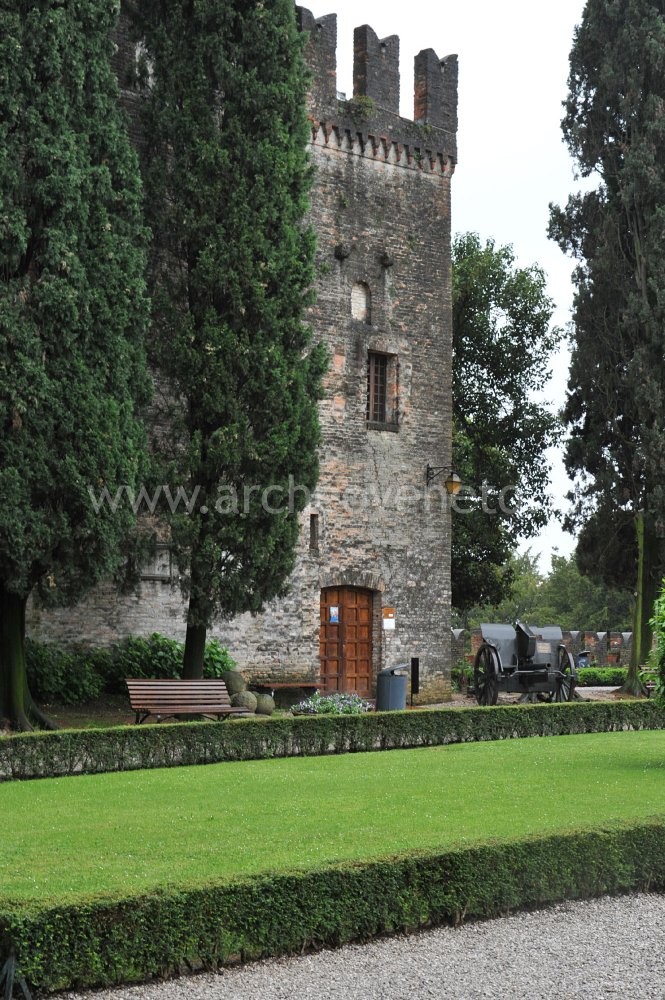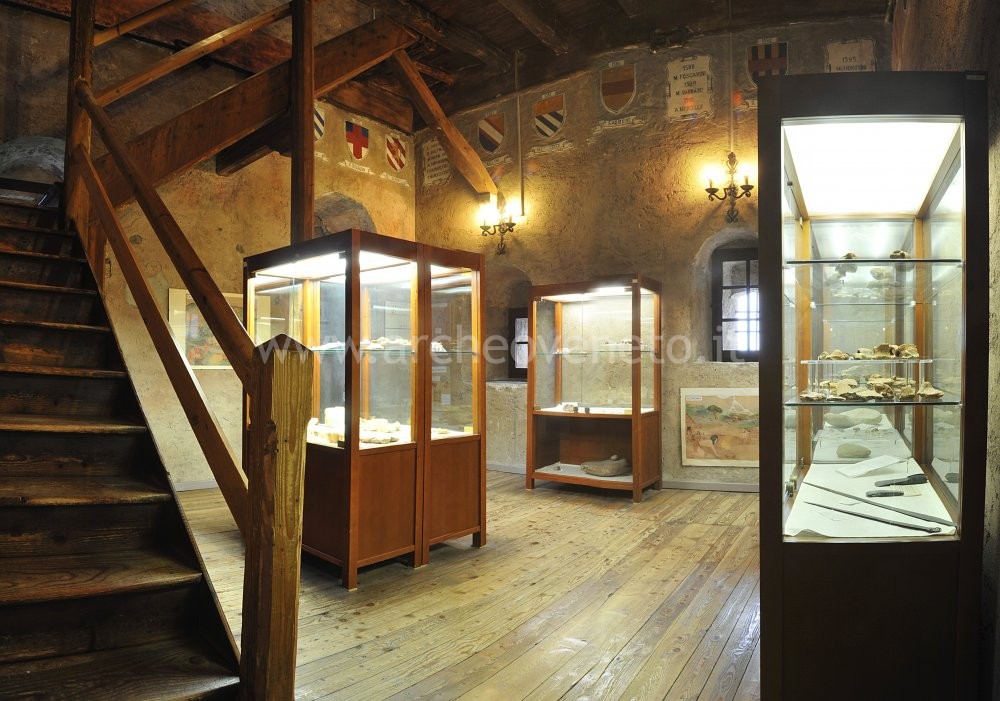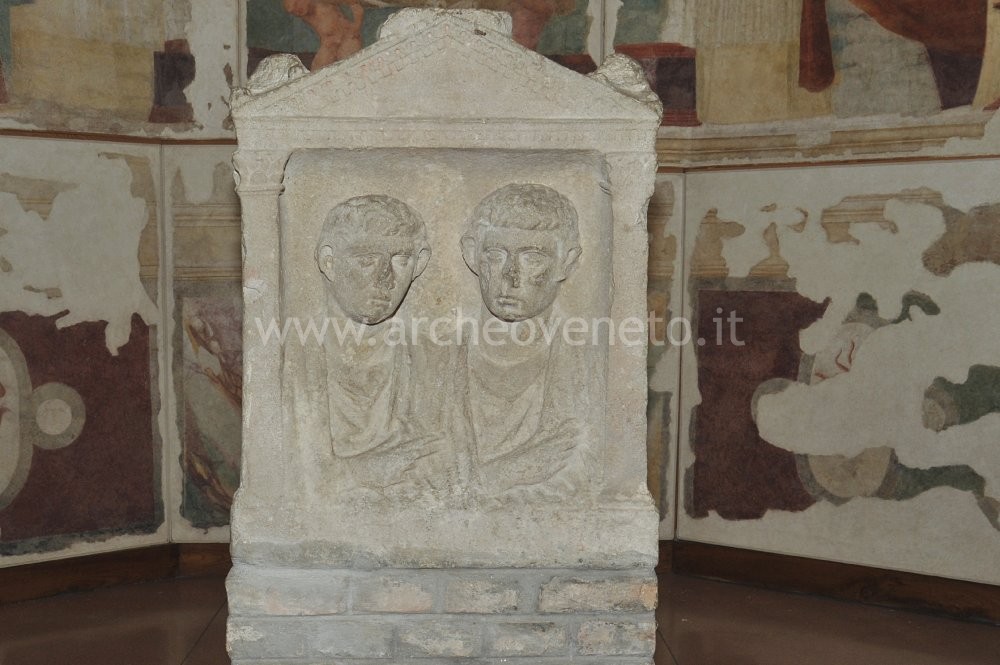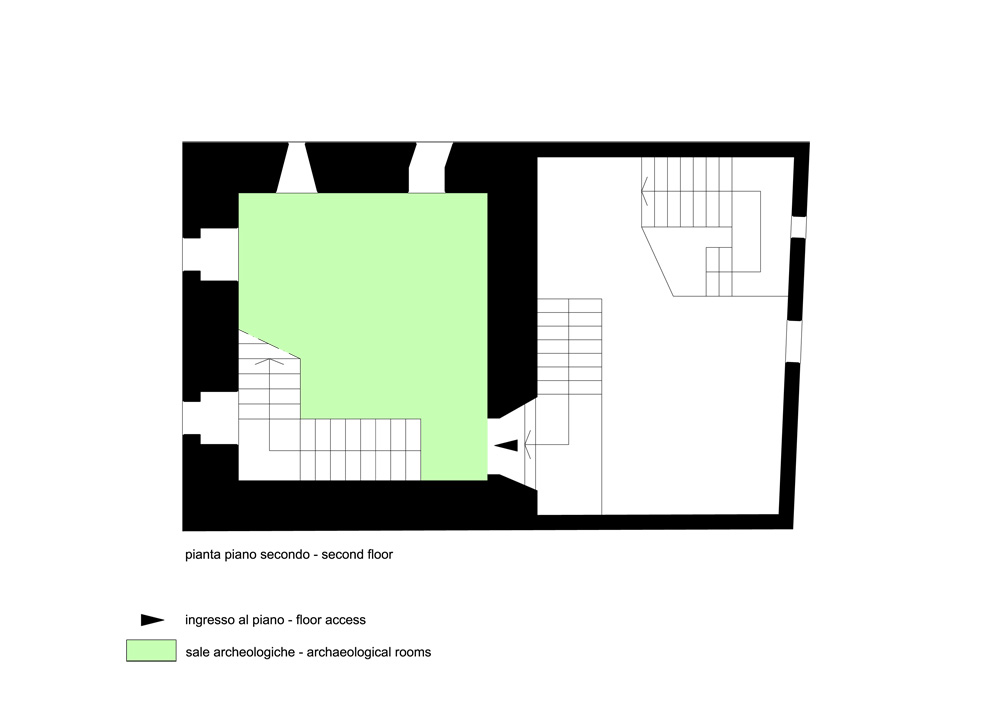|
|
File
Civic Museum of the Castle – Conegliano
|
| Piazzale San Leonardo 8 – 31015 Conegliano (TV)
|
  |
|
Summary

The Civic Museum of Conegliano is located in the watchtower of the Castle, at the top of the Giano hill. It includes a rich picture gallery with paintings and frescoes coming from convents and churches in the surrounding area, a lapidarium, an archaeological section and numerous rooms displaying ancient geographic maps, weapons and late-Renaissance pieces of furniture.
Collection history
The initial proposal to establish a municipal museum in Conegliano dates back to 1868; yet it was accomplished only in 1946 thanks to the commitment of Sir Antonio Tocchio. During the following years a committee made up citizens and headed by Sir Alfredo De Mas was established, which was able to collect a large amount of works of art and archaeological finds, so that in 1994 a fully-fledged archaeological section was added, which hosts the archaeological finds from the area around Conegliano.
|

 The room devoted to the archaeological finds display the prehistoric and Roman materials found in Conegliano and its surroundings. The visit starts with an archaeological map showing the places in which the most important items presented in this section were found. The first display case, placed at the bottom of the room, contains the most ancient prehistoric finds discovered in the area around Conegliano, which include a mastodon tooth (Cenozoic era, 65-2 million years ago), some flint tools from Susegana (middle Paleolithic), numerous prehistoric lithic tools (a quern with pestle, blades, scratchers, arrowheads, cores and scrapers) from Colfosco, a flake from Bortolotte and pottery of the Late Bronze and Early Iron Age from Colle della Tombola (strap handles, small olla rims, low-foot bowl, fragment of a ring-shaped support and others) and San Vendemmiano (a ribbed fragment and a block of furnace slag). The room devoted to the archaeological finds display the prehistoric and Roman materials found in Conegliano and its surroundings. The visit starts with an archaeological map showing the places in which the most important items presented in this section were found. The first display case, placed at the bottom of the room, contains the most ancient prehistoric finds discovered in the area around Conegliano, which include a mastodon tooth (Cenozoic era, 65-2 million years ago), some flint tools from Susegana (middle Paleolithic), numerous prehistoric lithic tools (a quern with pestle, blades, scratchers, arrowheads, cores and scrapers) from Colfosco, a flake from Bortolotte and pottery of the Late Bronze and Early Iron Age from Colle della Tombola (strap handles, small olla rims, low-foot bowl, fragment of a ring-shaped support and others) and San Vendemmiano (a ribbed fragment and a block of furnace slag).
Going on towards the right, there is the second display case, which contains the Neolithic and Enolithic finds discovered in 1986 in Ferrera. The objects found in this site include either lithic materials (a trachyte quern, arrowheads, axe fragments, scratchers, cores, small blades, scrapers and retouched blades) or earthenware decorated with carving and engraving techniques (fragments of vases, spindle whorls and handles of different kinds), closely linked to the last phase of the Square Mouth Vases Culture, which was typical of northern Italy.
Another important site, in which Neolithic finds have been found is Parè, close to the settlement of Ferrera. The objects found here include either lithic material (burins, scratchers of different kinds, cores, retouched fakes, arrowheads, small blades and a quern fragment) or earthenware (dolium walls, rims of square mouth vases, fragments of vases with engraved decoration, furnace slag and others), which can be seen in the third display case and which cover a long time span (from Neolithic to the early Iron Age), proving the presence of a lasting settlement.
The fourth display case contains ceramic material (ribbed dolium walls, fragments of a truncated conical bowl, a spindle whorl fragment, handles of different kinds, a truncated conical bowl foot, handle with horn-shaped ends, fragments of small ollas and vessel bottoms) from the middle, recent and final Bronze Age, discovered in the 70’s near Casa Cima and Costa and on the slopes of the Castle hill. The same display case contains also two axes from Colfosco (a bronze “flanged” axe of the 7th cent. B.C. and one with raised edges of the 18th cent. B.C.), as well as two swords of the “Sauerbrunn” type of the middle bronze age, which were found on the shore of the Piave river, in Falzè, and near Canale di Barche, between the Santa Maria and Revine lakes.
At the centre of the room there are two display cases devoted to the finds of the Roman period discovered in the area of Campolongo. The first one displays a set of fictile finds (1st cent. B.C.- 1st cent. A.D.), which refer to the area that in the Roman age was characterized by the Roman centuriation and the construction of numerous country villas. It contains fragments of ollas, bowls, a sigillata patera, amphoras and round or truncated conical loom weights. The second display case contains objects probably related to the grave goods, which were found in the excavation carried out in 1988 in via Maggiore Piovesana, in Campolongo. They include basins and bowls used as cover, fragments of ollas and glass unguentaria, fragments of floor mosaic, a piece of a baked clay floor, iron nails, various bronze objects and three coins of late Antiquity.
The space under the stairs displays Roman building materials (bricks, tiles and pantiles) found in Campolongo.
|

 Beside the rich collection of paintings, the picture gallery contains also a funerary stele of the Roman period from Campolongo (1st cent. B.C.), which is very likely to depict two magistrates. Beside the rich collection of paintings, the picture gallery contains also a funerary stele of the Roman period from Campolongo (1st cent. B.C.), which is very likely to depict two magistrates.
|

Admission: Negli orari di apertura
Ticket: Si
Price: Full fare: 2.50 €; reduced fare: 1.50; school classes 1 €.
 School access School access
Opening Days
| Tipology |
When |
Specs |
| Summer |
Tuesday |
10.00 – 12.30 e 16.00 – 19.30 |
| Summer |
Wednesday |
10.00 – 12.30 e 16.00 – 19.30 |
| Summer |
Thursday |
10.00 – 12.30 e 16.00 – 19.30 |
| Summer |
Friday |
10.00 – 12.30 e 16.00 – 19.30 |
| Summer |
Saturday |
10.00 – 12.30 e 16.00 – 19.30 |
| Summer |
Sunday |
10.00 – 12.30 e 16.00 – 19.30 |
| Winter |
Tuesday |
10.00 – 12.30 e 14.30 – 18.00 |
| Winter |
Wednesday |
10.00 – 12.30 e 14.30 – 18.00 |
| Winter |
Thursday |
10.00 – 12.30 e 14.30 – 18.00 |
| Winter |
Friday |
10.00 – 12.30 e 14.30 – 18.00 |
| Winter |
Saturday |
10.00 – 12.30 e 14.30 – 18.00 |
| Winter |
Sunday |
10.00 – 12.30 e 14.30 – 18.00 |
During November the Museum is open only on saturday and on sunday.
Recommended tour time (minutes): 20
 Parking Parking
 Bar/Resaturant Bar/Resaturant
Privately run.
 Brochure Brochure
Italian
 Information boards Information boards
Italian
 Captions under exhibits Captions under exhibits
Italian
 Guided Tours Guided Tours
Only in springtime for school classes. Every Monday of September free admission and guided visit free of charge. In July every Saturday night the museum is open for visits by night (entrance fee but the visit is free of charge)
 Educational activities Educational activities
Only in September on Sundays for school classes.
 Library and documentation centre Library and documentation centre
 Other activities Other activities
| Musei e raccolte archeologiche del Veneto 2004, a cura di Di Mauro A., Dosson di Casier, pp. 83-84. |
| Bonetto J. 2009, Veneto (Archeologia delle Regioni d’Italia), Roma, pp. 416. |
|

